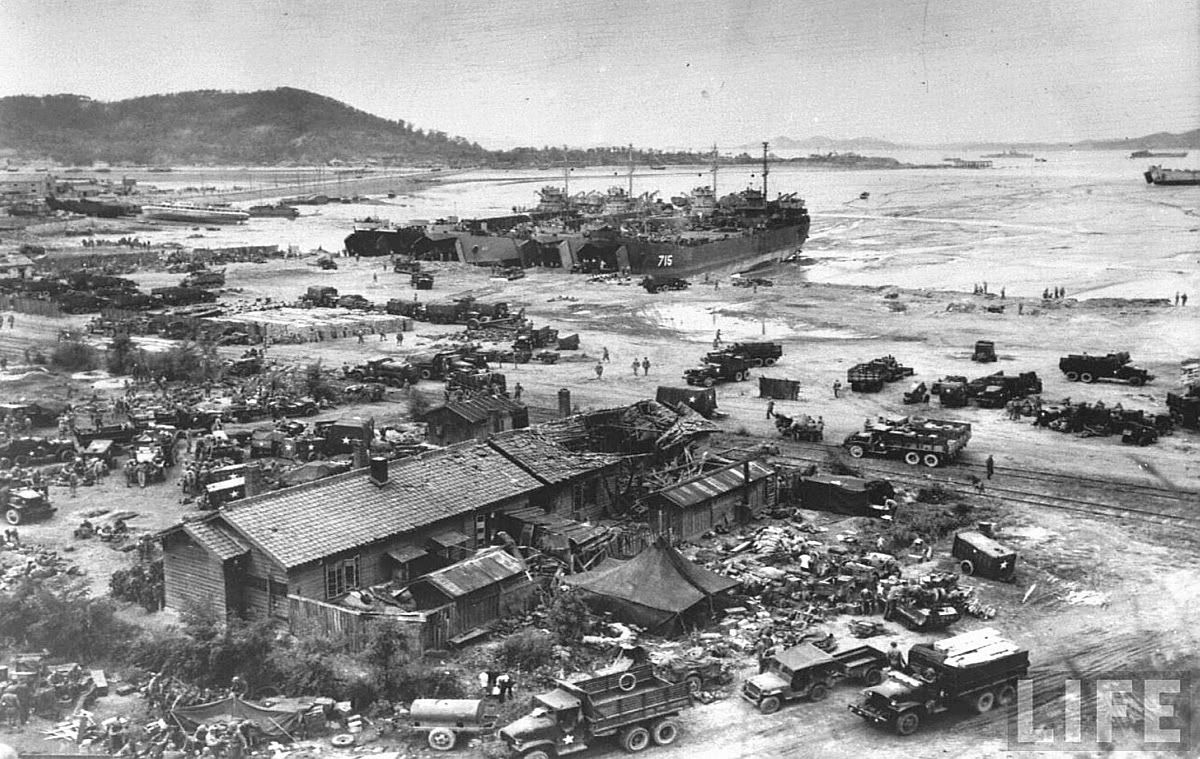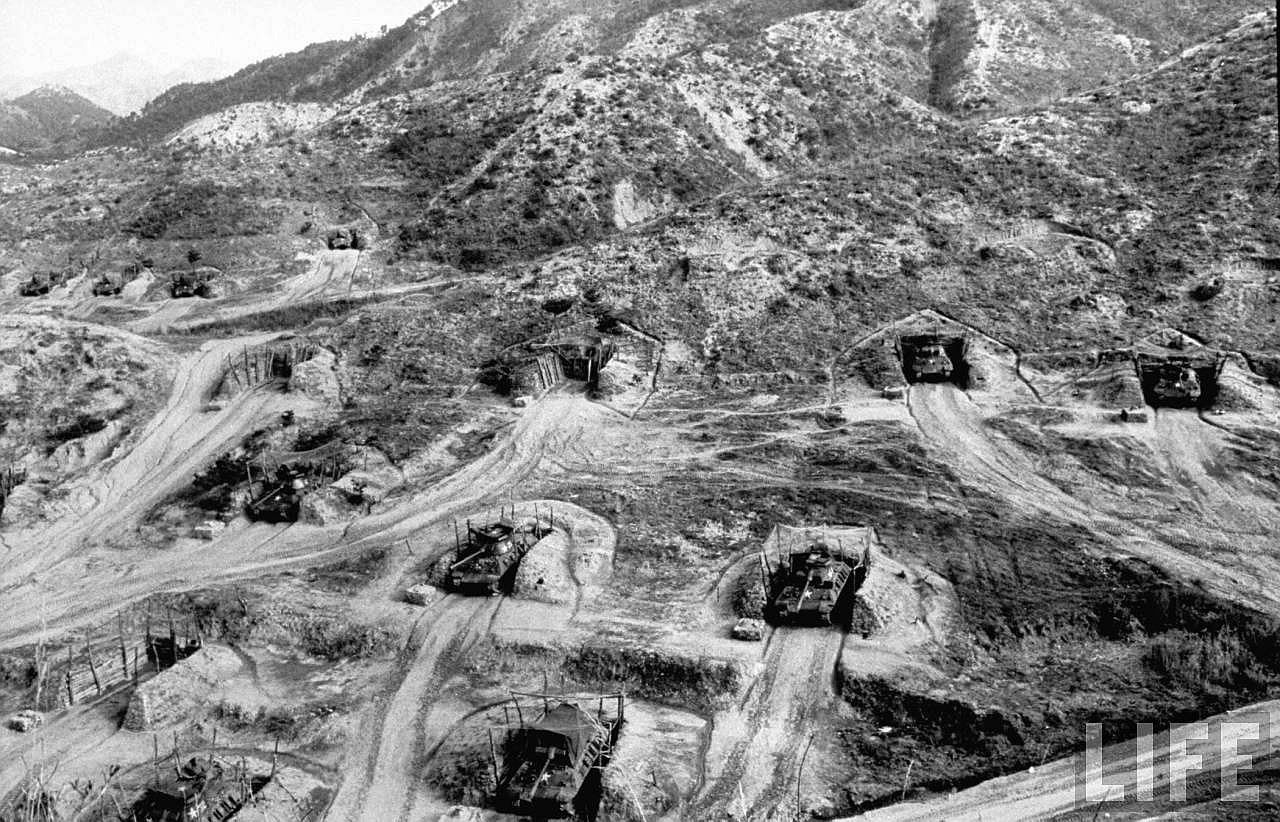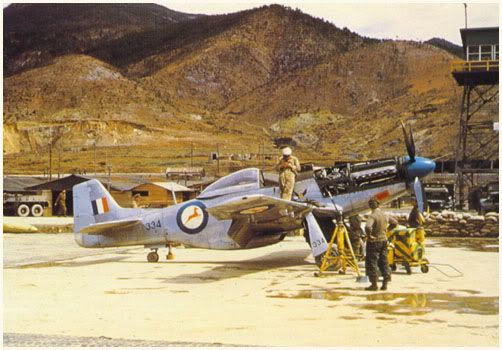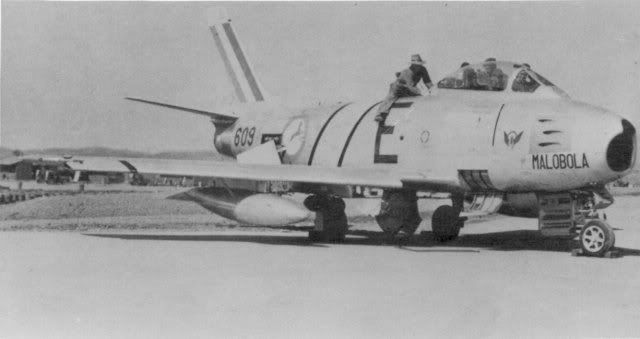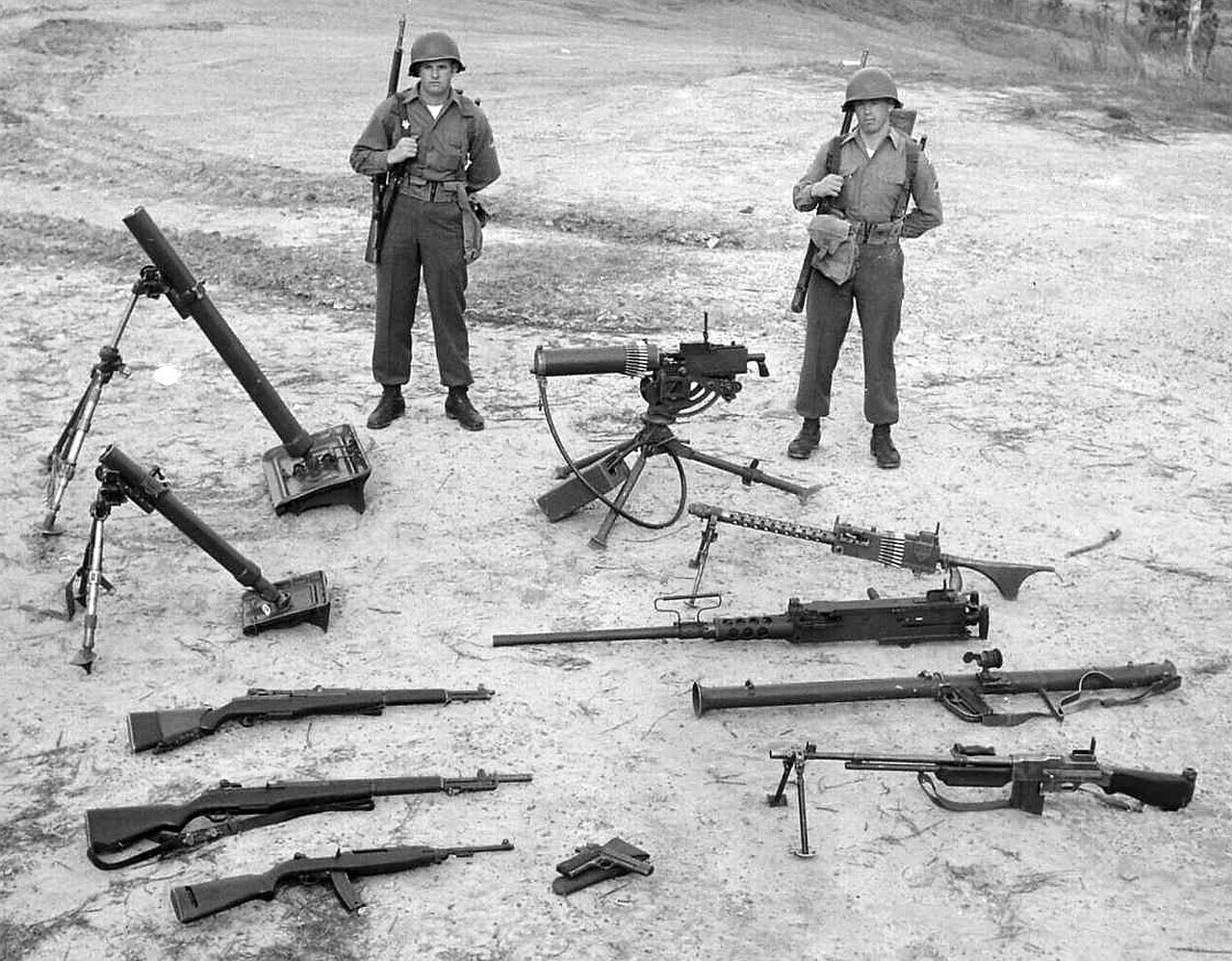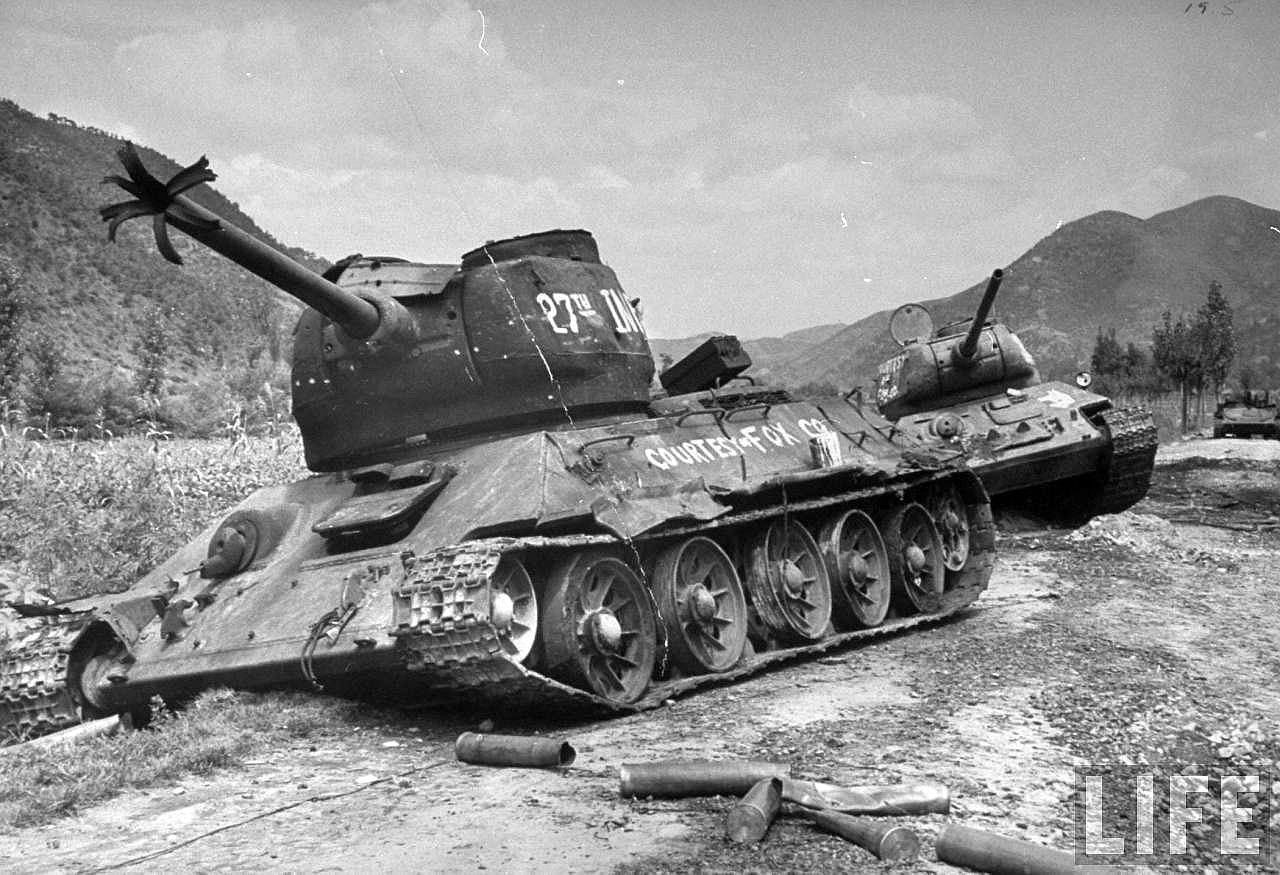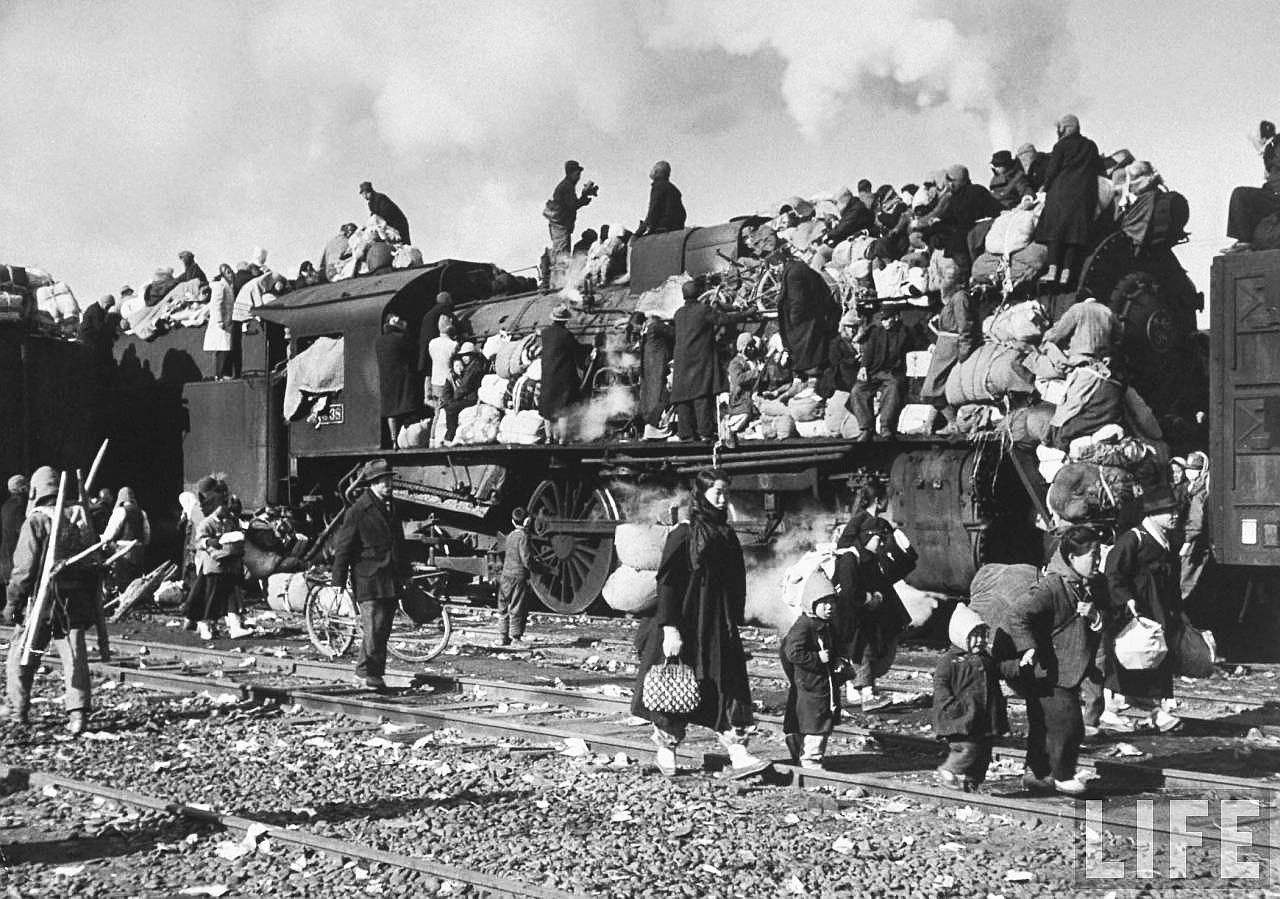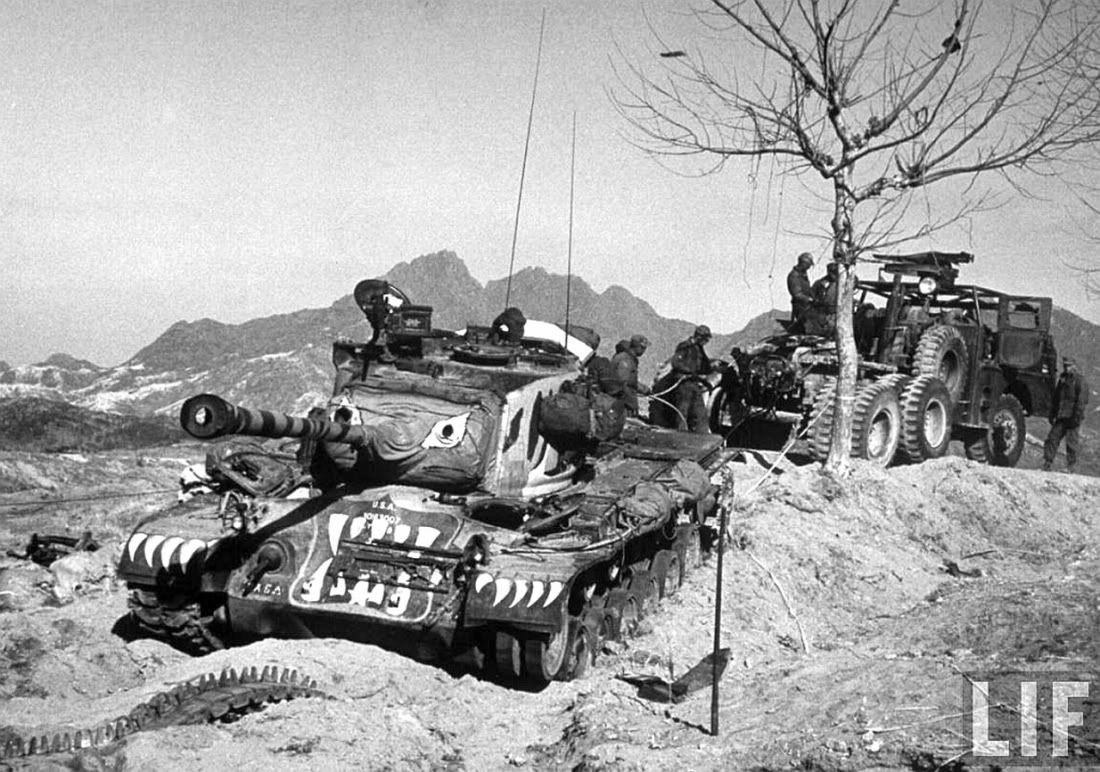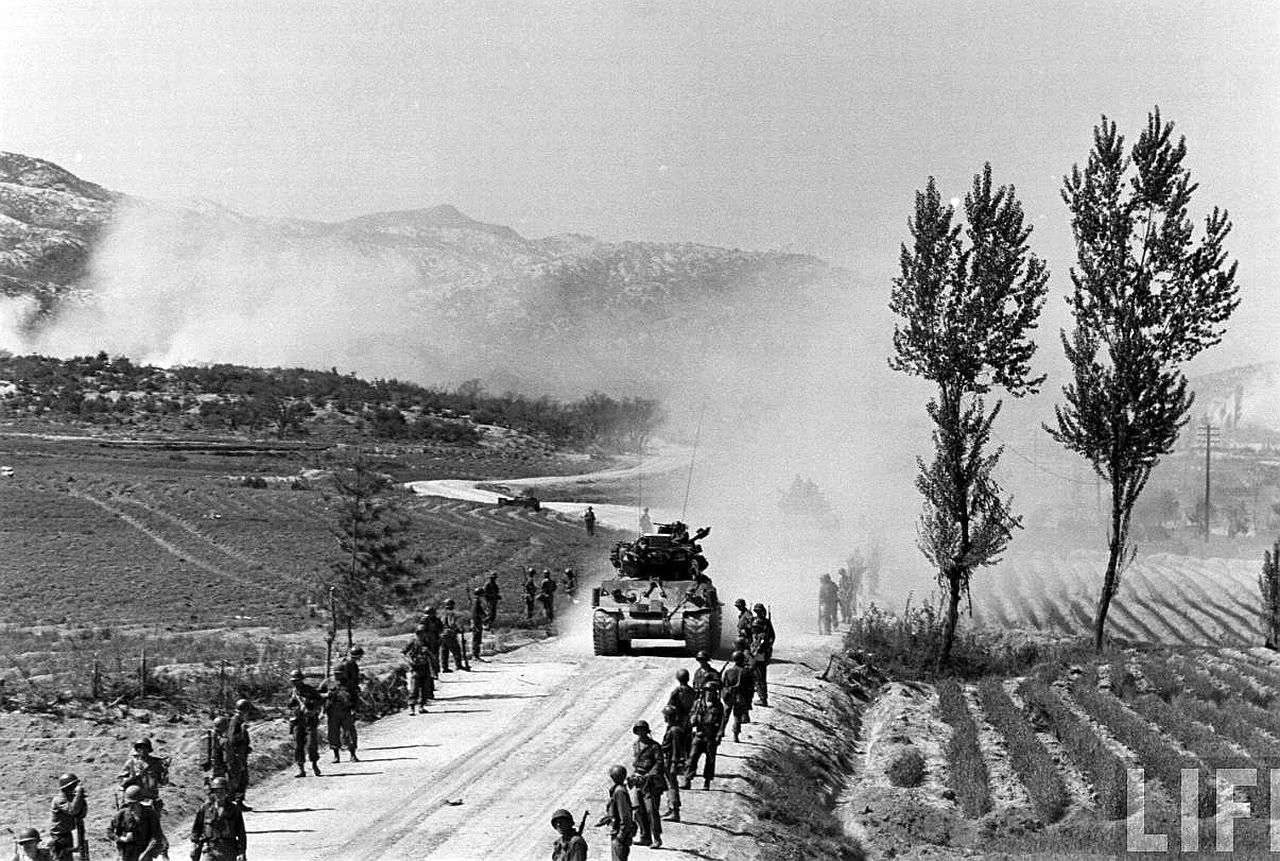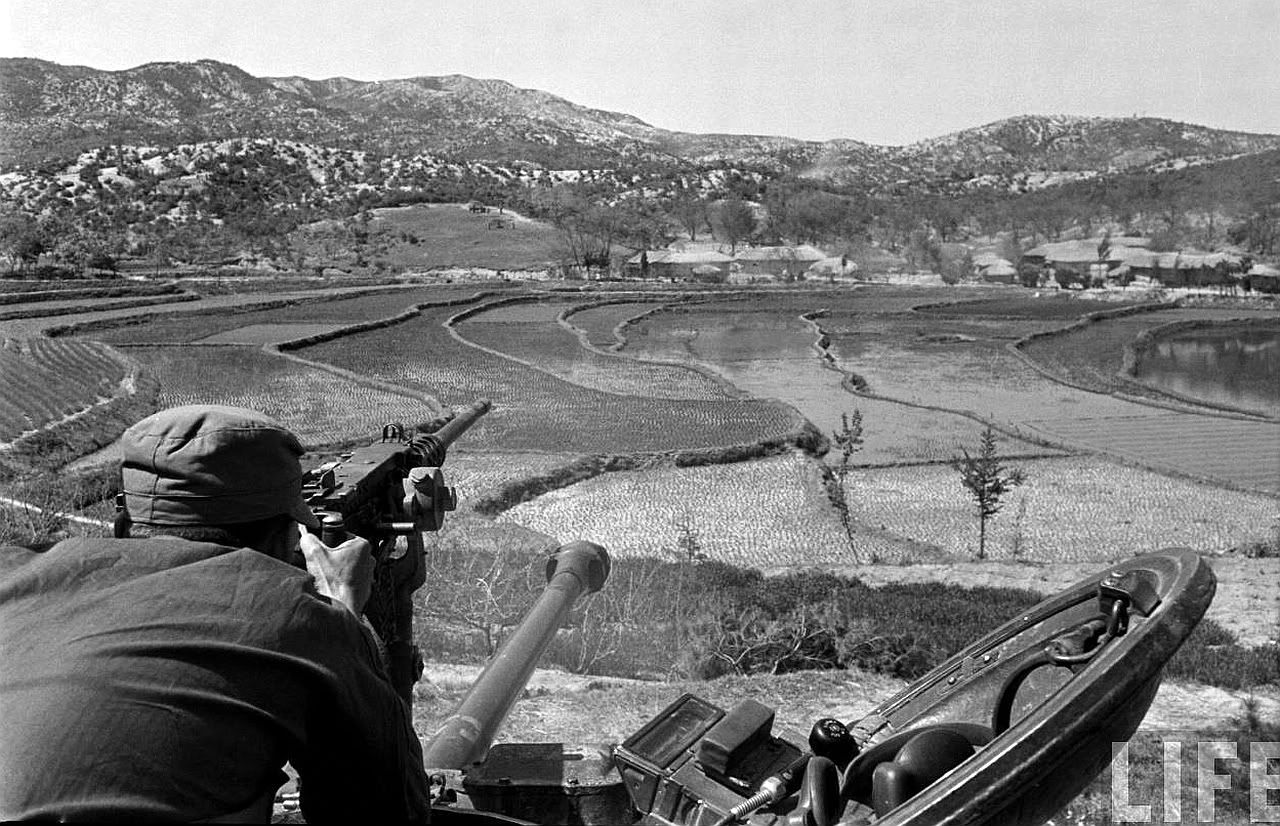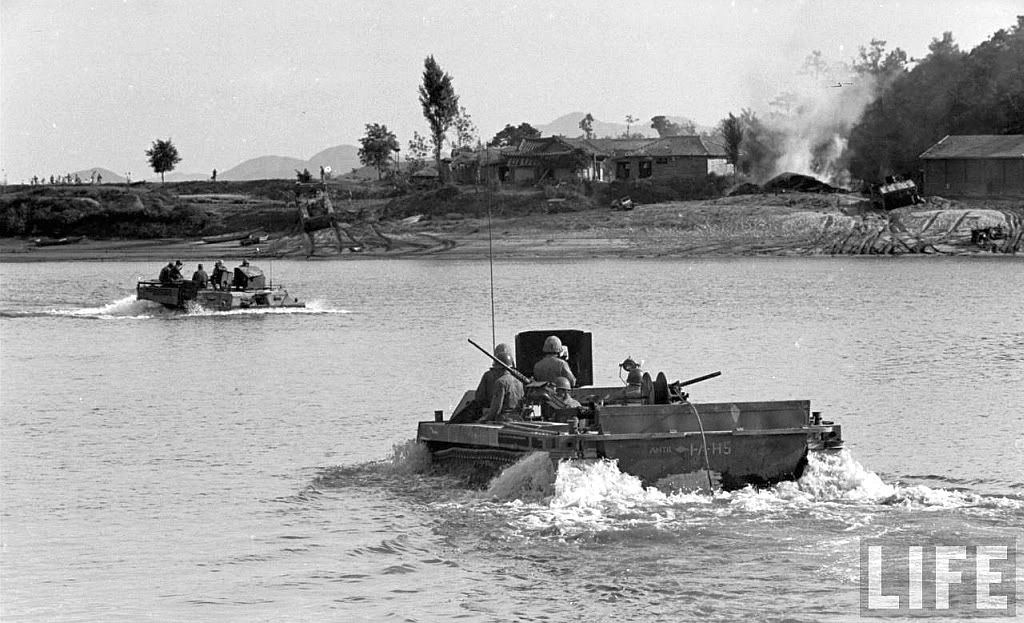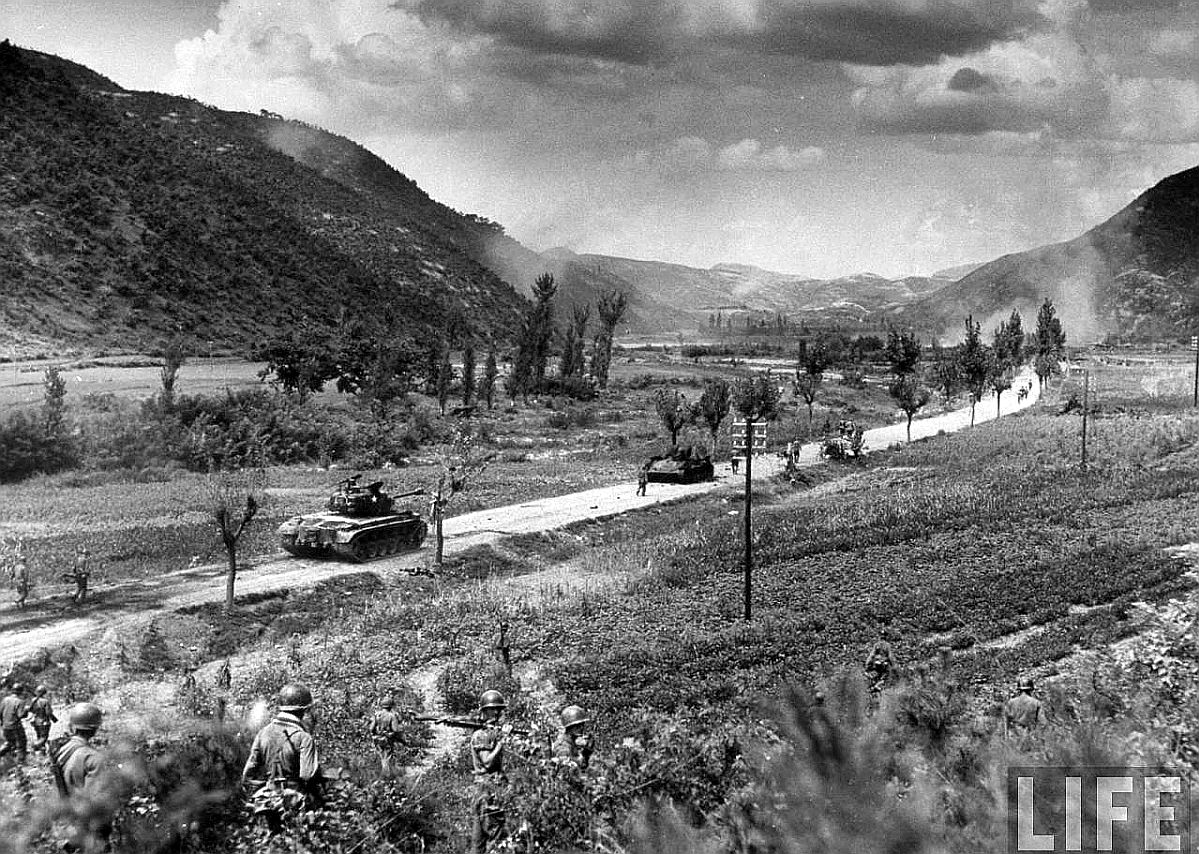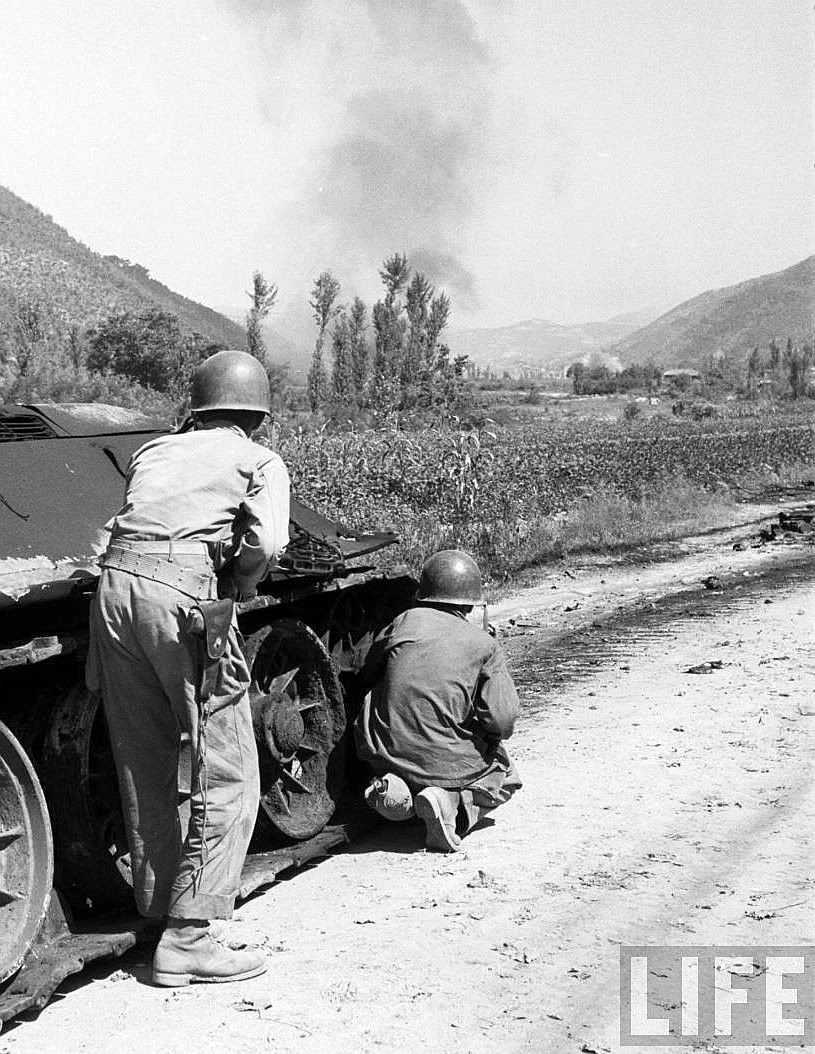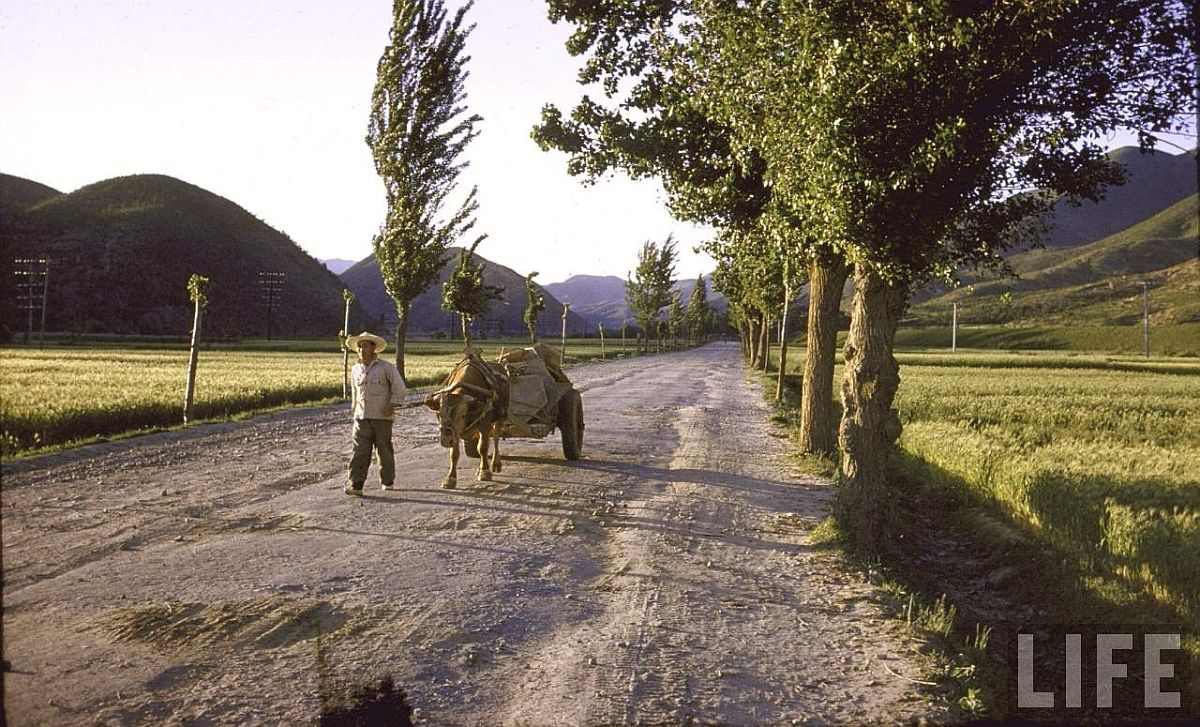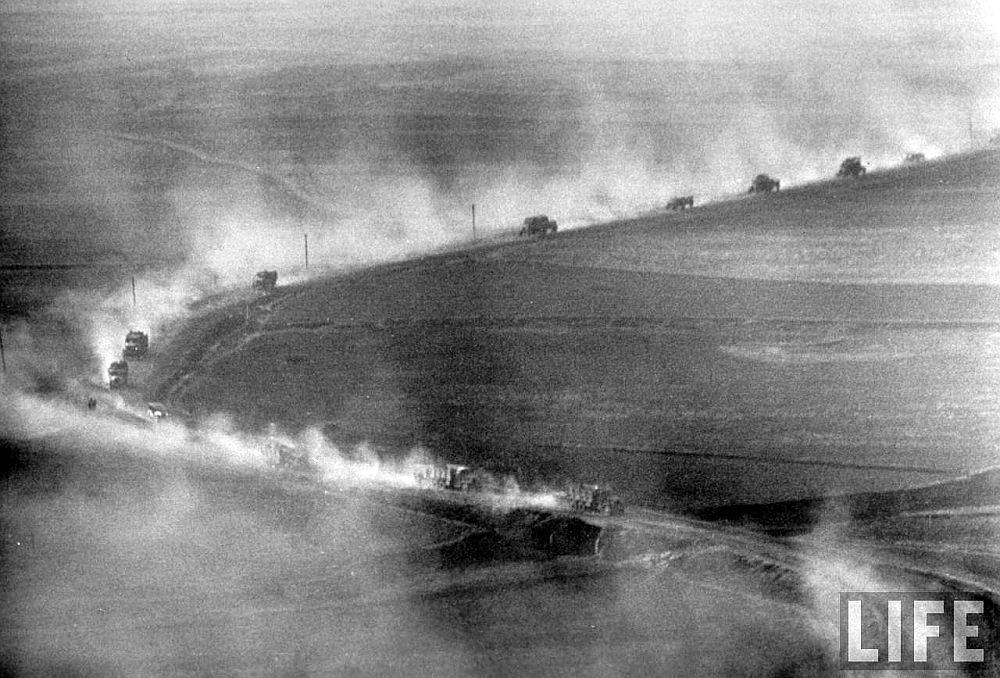South African Air Force Mustangs operated in Korea by 2 Squadron SAAF, The Flying Cheetahs -- later upgraded to F-86 Sabre jets.
During the Second World War 2 Squadron of the South African Air Force saw action against the Italians in East Africa in support of 1 South African Brigade. It was here that they were nicknamed "The Flying Cheetahs" because they kept two pet cheetahs as mascots.
In April 1941 the squadron transferred to Egypt to join the Desert Air Force. In early 1942 they received Kittyhawk 1A aircraft, but these were no match for the aircraft of the Luftwaffe, and when the squadron moved to Sicily in 1943 they were re-equipped with Spitfire VCs and later Spitfire IXs. The squadron scored a major success in April 1944 when, together with 7 Wing SAAF, they attacked the Banja Luka airfield in Yugoslavia and destroyed 40 enemy aircraft.
When the Korean war broke out on 25 June 1950 with some 90,000 North Korean soldiers and hundreds of Russian-built T-34 tanks crossing the border and overwhelming the South Korean forces, South Africa, as one of the founding members of the United Nations, decided to contribute a fighter squadron to the Allied Forces. The UN had acted quickly, calling for a cease-fire, and, when this was ignored, passing a resolution authorizing the UN to send troops to help South Korea. The South African Prime Minister, Dr. D.F. Malan, stated during the debate that followed South Africa's decision to take part that he felt it was South Africa's duty to side with the anti-Communist countries to combat 'aggressive communism' wherever necessary.
Thus it was that while General MacArthur was gathering all the troops, aircraft and ships he could muster in the far east, 50 officers and 157 other ranks of 2 Squadron sailed from Durban on 26 September 1950 for Yokohama Harbour, where they were welcomed by the Americans. Altogether, 15 other nations sent troops and equipment to join the main American force in the far east. Their contribution was small when compared with the large American commitment, but served to emphasize the unity of the countries of the UN in making a stand against communist aggression.
The pilots of 2 Squadron underwent conversion training on F-51D Mustangs and by 16 November were ferrying their aircraft across to Pusan East Air Base in Korea.. Three days later two of the pilots took off together with two USAAF pilots to fly the first South African combat sorties of the war. At that time MacArthur had just made his famous landing at Inchon and the Americans were pursuing the fleeing North Korean troops towards the Yalu, confident that victory was in sight.
The South African squadron came under the operational control of the 18th Fighter-Bomber Wing of the US Fifth Air Force, which was the tactical air force of the Far East Air Forces (FEAF). The task of 2 Squadron was to destroy enemy air power, support the ground troops, fly air strikes, and carry out reconnaissance flights for the ground troops.
Within a few weeks of the start of 2 Squadron's operations, however, the situation had changed. On 16 October 1950 the Fourth Field Army of the Chinese People's Republic began crossing the Yalu River in secret. At first the Americans thought it was a 'limited intervention' by Chinese volunteers to help the North Koreans avoid total defeat, but by the end of November it became clear that the Chinese had entered the war against the UN forces. Full scale attacks by the Chinese started on 26 November and 2 Squadron was thrown into a major air effort to stop the flood of over 200,000 Chinese troops from overrunning the now retreating UN forces. The weather at this time was extremely cold and the ground crews worked under freezing conditions to keep the Mustangs flying, often having to scrape ice and snow off the aircraft before they could take off.
On 5 December the first SAAF aircraft was lost when it attacked a railway truck that turned out to be loaded with explosives. The resulting blast knocked the pilot temporarily unconscious and he was forced to crash land. An American L5 aircraft later landed on a narrow road near the crash site and was able to rescue the pilot and his observer. The squadron flew numerous sorties to assist the hard-pressed ground forces, but were continually moved back to new bases as the communist advance continued. Despite the all-out air offensive, the UN troops were pushed back to Seoul and on 6 January 1951 they abandoned the city and moved further back to pre-arranged defensive positions. The air attacks were intensified and the aircraft found that they were subject to an increasing amount of ground fire from the communist forces. During February at least 3 SAAF aircraft were lost as a result of small arms fire while strafing enemy vehicles and troop positions.
On 1 March the squadron flew 32 sorties in one day, establishing a new record in 18 Fighter-Bomber Wing, destroying 7 vehicles and 2 tanks, but at the same time losing another 2 pilots. By this time General Ridgeway had decided to counter-attack in Central Korea and sent the 25th US Division across the Han River. The communists abandoned Seoul and on 15 March the 8th US Army drove into Hongchu in the central area. No 2 Squadron was by now fully integrated into 18 FBW and was building a reputation for operational skill and aggressiveness. By 12 April 1951 the squadron had flown 2000 sorties against the enemy and received a letter of appreciation from Lt.Gen. Stratemeyer, Commanding General of the Far East Air Forces. Lt.Gen. Patridge, Commander of the 5th Air Force also complimented the South Africans on their 'outstanding performance'.
On 22 April the communists launched another major offensive with 70 divisions, forcing the UN forces to withdraw in some sectors of the front, but by the end of the month the attack petered out, largely due to the efforts of the air force in disrupting enemy transport and supply dumps. On 9 May a huge strike, comprising 300 aircraft, took place on the communist air base at Sinuiju and Major Blaauw of 2 Squadron was awarded the American Silver Star decoration for his part in protecting and rescuing a downed pilot. By 22 May the communist offensive had collapsed and by the beginning of June the UN forces were again in possession of all South Korean territory.
On 24 June another SAAF pilot won the American DFC when he led 3 other Mustangs in an attack on enemy troops that were poised to overrun an American position. One of the Marines later commented that:
we were catching all hell because of an overwhelming Gook counter-attack. The tide of battle was leaving casualties in its wake like seashells cast upon a beach. It was then we saw four silvery streaks plummet from the skies with guns blazing. It was so wondrous a sight we completely forgot our whereabouts or line and just stood up in our foxholes and cheered. The Hall of Fame does not possess any greater men than those who flew that day.
In July, with the start of peace talks at Punmanjon the air war entered a new phase, with the emphasis now on maintaining air superiority. On 8 July 2 Squadron had its first encounter with MiG-15 fighters, but the Mustangs managed to beat them off. A new major offensive was launched by the UN forces on 18 August, and 2 Squadron was kept extremely busy. On 25 September the squadron flew 40 sorties in one day, the highest number since its arrival in Korea. In a total of 4920 sorties in its first year, the squadron had lost 36 of its 61 aircraft, but had destroyed over 2000 buildings, 458 vehicles, 14 tanks, 13 bridges and numerous other targets.
On 20 March 1952 the squadron had its second encounter with MiGs when a flight of 4 Mustangs was attacked by 5 MiGs, resulting in one Mustang being shot down and one MiG damaged. The communists now also had flak batteries placed along all their railway lines, making air attacks extremely dangerous. Nevertheless the air attacks were increased in order to put pressure on the communists at the peace talks.
The increasing appearance of MiGs led to No 2 Squadron being re- equipped with F-86F Sabre jets, and training courses were held in Japan in November. The last mission flown by Mustangs was on 27 December, and by January the first Sabres had arrived. Training of the SAAF pilots continued into February and by 12 March the squadron was once more flying sorties. The squadron was mainly employed in a ground attack role as the Sabre proved to be an excellent aircraft for dive-bombing, carrying two 1000lb bombs or napalm and rockets.
In June and July the communists again launched a massive offensive against the UN forces, and despite bad weather the air force was again called on to give air support to the troops, carrying out their task so effectively that the Communist offensive ground to a halt and their delegates at the peace talks decided the time had come to end the war. In order to prevent the enemy from building up its air power in the meantime, the UN aircraft continued to carry out intensive attacks.
Finally, on 27 July an armistice was signed, with 2 Squadron flying a record 41 sorties that day before the armistice finally went into effect. The overall total of sorties flown by 2 Squadron during the war was 12,067 and altogether 34 pilots and 2 ground crew had been lost. By October all operational flying had ended and at the end of the month the SAAF pilots began to return home to South Africa.
